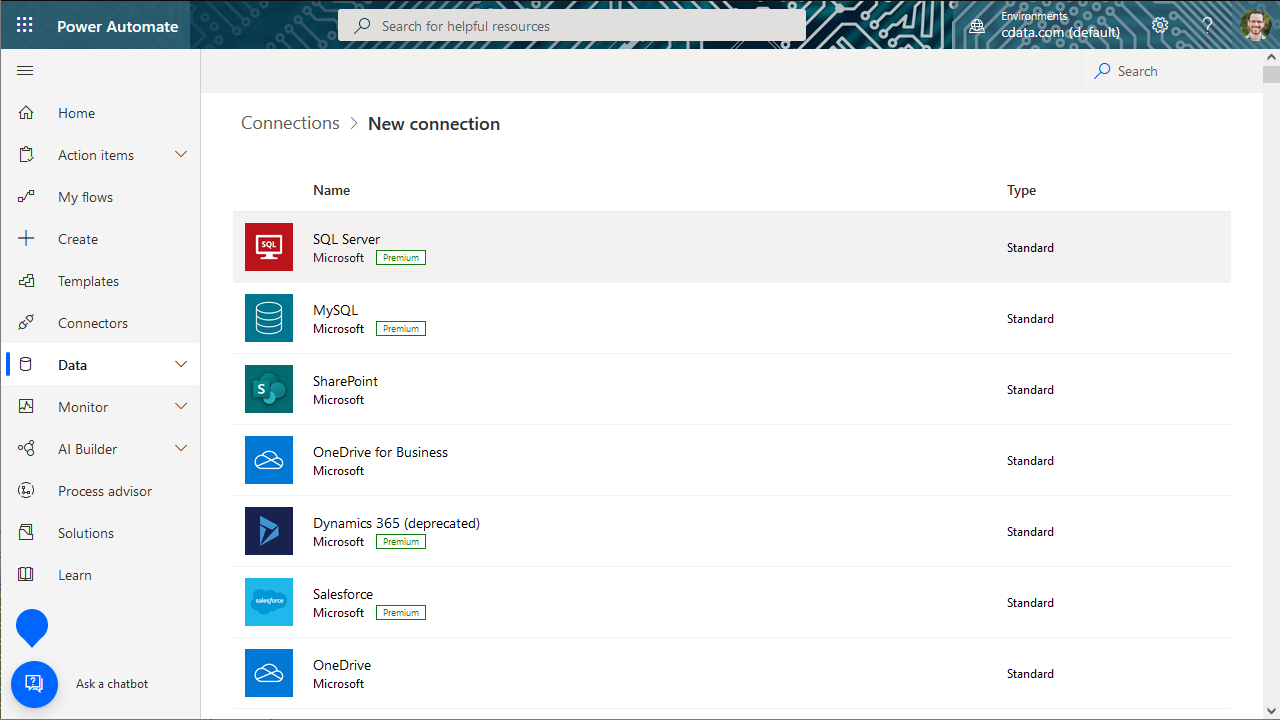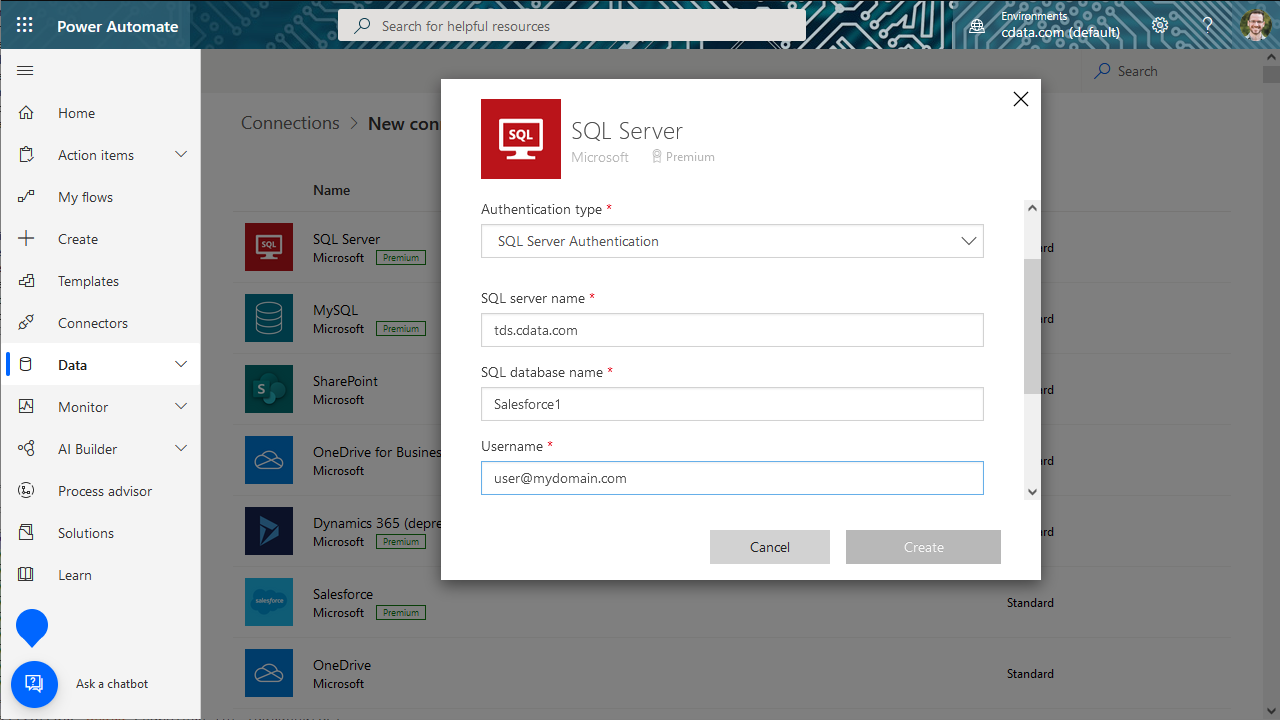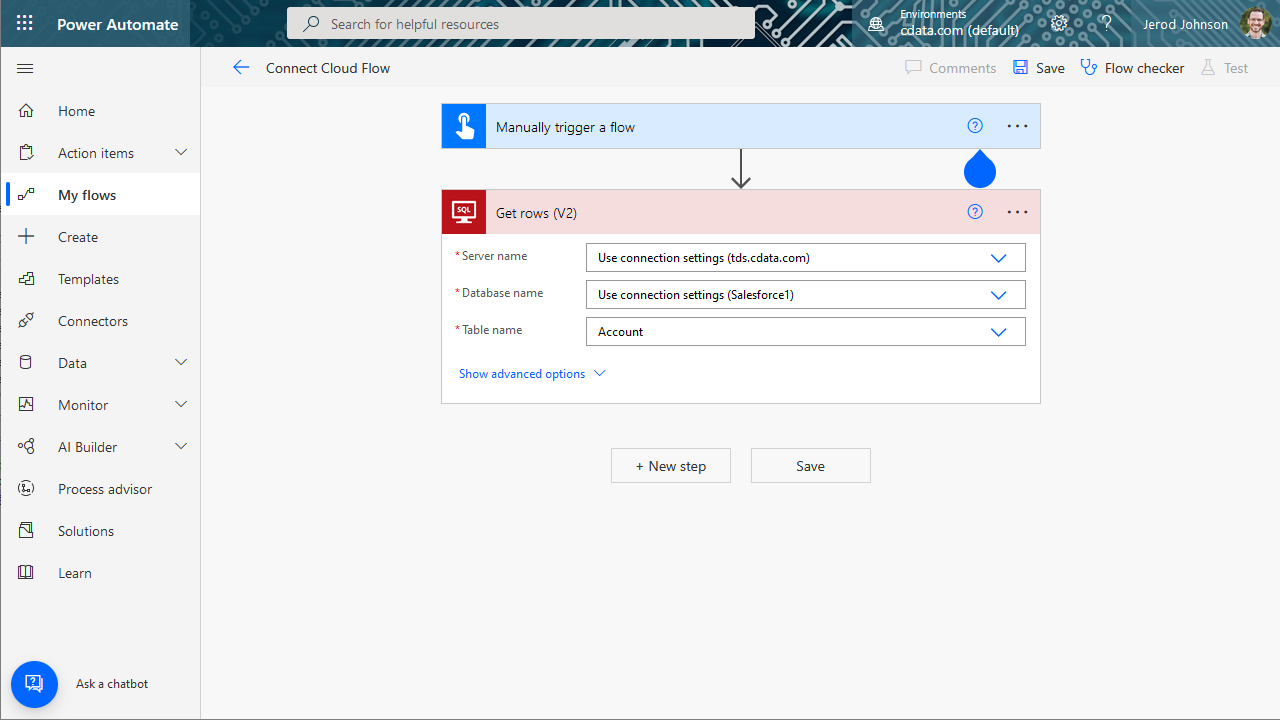Discover how a bimodal integration strategy can address the major data management challenges facing your organization today.
Get the Report →Integrate Microsoft Planner Data into Automated Tasks with Power Automate
Use CData Connect Cloud to connect to Microsoft Planner data and integrate live Microsoft Planner data into your Power Automate tasks.
Microsoft Power Automate is an online service that automates events (known as workflows) across the most common apps and services. When paired with CData Connect Cloud, you get instant, cloud-to-cloud access to Microsoft Planner data for visualizations, dashboards, and more. This article shows how to connect to Connect Cloud from Power Automate and integrate live Microsoft Planner data into your workflows and tasks.
CData Connect Cloud provides a pure SQL, cloud-to-cloud interface for Microsoft Planner, allowing you to easily integrate with live Microsoft Planner data in Power Automate — without replicating the data. CData Connect Cloud looks exactly like a SQL Server database to Power Automate and uses optimized data processing out of the box to push all supported SQL operations (filters, JOINs, etc) directly to Microsoft Planner, leveraging server-side processing to quickly return Microsoft Planner data.
Configure Microsoft Planner Connectivity for Power Automate
Connectivity to Microsoft Planner from Power Automate is made possible through CData Connect Cloud. To work with Microsoft Planner data from Power Automate, we start by creating and configuring a Microsoft Planner connection.
- Log into Connect Cloud, click Connections and click Add Connection
![Adding a Connection]()
- Select "Microsoft Planner" from the Add Connection panel
![Selecting a data source]()
-
Enter the necessary authentication properties to connect to Microsoft Planner.
You can connect without setting any connection properties for your user credentials. Below are the minimum connection properties required to connect.
- InitiateOAuth: Set this to GETANDREFRESH. You can use InitiateOAuth to avoid repeating the OAuth exchange and manually setting the OAuthAccessToken.
- Tenant (optional): Set this if you wish to authenticate to a different tenant than your default. This is required to work with an organization not on your default Tenant.
When you connect the Driver opens the MS Planner OAuth endpoint in your default browser. Log in and grant permissions to the Driver. The Driver then completes the OAuth process.
- Extracts the access token from the callback URL and authenticates requests.
- Obtains a new access token when the old one expires.
- Saves OAuth values in OAuthSettingsLocation to be persisted across connections.
![Configuring a connection (Salesforce is shown)]()
- Click Create & Test
- Navigate to the Permissions tab in the Add Microsoft Planner Connection page and update the User-based permissions.
![Updating permissions]()
Add a Personal Access Token
If you are connecting from a service, application, platform, or framework that does not support OAuth authentication, you can create a Personal Access Token (PAT) to use for authentication. Best practices would dictate that you create a separate PAT for each service, to maintain granularity of access.
- Click on your username at the top right of the Connect Cloud app and click User Profile.
- On the User Profile page, scroll down to the Personal Access Tokens section and click Create PAT.
- Give your PAT a name and click Create.
![Creating a new PAT]()
- The personal access token is only visible at creation, so be sure to copy it and store it securely for future use.
With the connection configured, you are ready to connect to Microsoft Planner data from Power Automate.
Connecting to CData Connect Cloud
To use Connect Cloud to integrate Microsoft Planner data into your Power Automate tasks, you need a new SQL Server connection:
- Log in to Power Automate
- Click Data -> Connections -> New connection
- Select SQL Server
![Creating a new SQL Server Connection]()
- In the connection wizard:
- Choose to connect directly
- Set SQL server name to tds.cdata.com
- Set SQL database name to the name of the Microsoft Planner connection (e.g. MicrosoftPlanner1)
- Set Username to a Connect Cloud user (e.g. user@mydomain.com)
- Set Password to the PAT for the above user
- Click Create
![Connecting to Connect Cloud]()
Integrating Microsoft Planner Data into Power Automate Tasks
With the connection to Connect Cloud configured, you are ready to integrate live Microsoft Planner data into your Power Automate tasks.
- Log in to Power Automate
- Click My flows -> New flow and choose to create the flow from blank or template
- Add (or configure) a SQL Server action (like Get rows) and configure the action to connect to your Connect Cloud connection
- Select a Table to work with (from the drop-down menu) and configure any advanced options (like filters, orders, etc)
![Getting Microsoft Planner "Rows"]()
- Configure any actions to follow and test, then save the flow
SQL Access to Microsoft Planner Data from Cloud Applications
Now you have a direct connection to live Microsoft Planner data from Power Automate tasks. You can create more connections and workflows to drive business — all without replicating Microsoft Planner data.
To get SQL data access to 100+ SaaS, Big Data, and NoSQL sources directly from your cloud applications, sign up for a free trial of CData Connect Cloud.
Related Power Automate Articles
This article walks through using CData Connect Cloud with Power Automate (Online). Check out our other articles for more ways to work with Power Automate Desktop:














